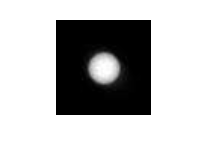
创建aiohttp应用程序
让我们从一个简单的应用程序开始,只是为了启动和运行aiohttp。首先,创建一个新的virtualenv。建议使用Python 3.5以后版本,因为我们将使用asyncio提供的async def和await语法。如果您想进一步开发该项目并利用异步理解的优势,则可以使用Python 3.6(本例使用python版本)。
接下来,安装aiohttp:
pip install aiohttp
现在创建一个python文件(称为nasa.py),并将一些代码放入其中:
from aiohttp import web
async def get_mars_photo(request):
return web.Response(text='A photo of Mars')
app = web.Application()
app.router.add_get('/', get_mars_photo, name='mars_photo')
如果您不熟悉aiohttp,则可能需要说明以下几点:
get_mars_photo协程是一个请求处理程序;它以HTTP请求作为唯一参数,并负责返回HTTP响应(或引发异常)
app是高级服务器;它支持路由器,中间件和信号(对于该程序,我们将仅使用路由器)
app.router.add_get 在HTTP GET方法和'/'路径上注册请求处理程序
注意:请求处理程序不必一定是协程,它们可以是常规函数。但是我们将使用asyncio的功能,因此程序中的大多数函数都将使用进行定义async def。
运行应用程序
要运行您的应用程序,您可以在文件末尾添加以下行:
web.run_app(app, host='127.0.0.1', port=8080)
python nasa.py
但是有更好的方法。在许多第三方库中,您可以找到aiohttp-devtools。它提供了一个很好的runserver命令,可以自动检测您的应用并支持实时重载:pip install aiohttp-devtools
adev runserver -p 8080 nasa.py
现在如果您访问localhost:8080,则应该在浏览器中看到"A photo of mars"的字样。
使用NASA API
当然,这还没有结束。如果您是一位敏锐的观察者,您会注意到我们没有得到实际的图像,而是一些文本。现在让我们解决这个问题。
要从火星获取照片,我们将使用NASA API。每个火星探路者(rover)都有自己的URL(对于好奇号,它url是https://api.nasa.gov/mars-photos/api/v1/rovers/curiosity/photos)。我们必须为每个请求至少提供2个参数:
响应数据里我们将获得一张照片列表,每张照片均带有URL,相机信息和探路者信息。
修改nasa.py文件,如下所示:
import random
from aiohttp import web, ClientSession
from aiohttp.web import HTTPFound
NASA_API_KEY = 'DEMO_KEY'
ROVER_URL = 'https://api.nasa.gov/mars-photos/api/v1/rovers/curiosity/photos'
async def get_mars_image_url_from_nasa():
while True:
sol = random.randint(0, 1722)
params = {'sol': sol, 'api_key': NASA_API_KEY}
async with ClientSession() as session:
async with session.get(ROVER_URL, params=params) as resp:
resp_dict = await resp.json()
if 'photos' not in resp_dict:
raise Exception
photos = resp_dict['photos']
if not photos:
continue
return random.choice(photos)['img_src']
async def get_mars_photo(request):
url = await get_mars_image_url_from_nasa()
return HTTPFound(url)
到底发生了什么事?
我们选择一个随机拍摄日期(对于“好奇心” max_sol,在撰写本文时,其值为1722)
ClientSession 创建一个会话,我们可以使用该会话从NASA API获取响应
我们使用获取JSON响应 resp.json()
我们检查响应中是否存在“照片”键;如果没有,我们已经达到了每小时请求数量的上限,我们需要稍等片刻
如果当天没有照片,我们会再次检查是否有其他拍摄时间
然后,我们使用HTTPFound响应重定向到找到的照片
获取NASA API密钥
DEMO_KEYNASA提供的默认设置可以正常工作,但是您很快就会达到每小时API调用的限制。我建议您获取自己的API密钥。您可以在此处进行操作 (注册过程非常简单快捷)。
现在,当您运行该应用程序时,您将直接从火星重定向到一个漂亮的图像:

好吧,这不完全是我的意思...
验证图像
您刚刚看到的图像并不让人受到启发。事实证明,漫游者拍摄了很多非常无聊的照片。我想看看马克·沃特尼(Mark Watney)在他不可思议的旅程中所看到的,但这还不够好。让我们找到一种解决方法。
我们将需要对图像进行某种形式的验证。在指定筛选条件前,我们可以修改代码:
async def get_mars_photo_bytes():
while True:
image_url = await get_mars_image_url_from_nasa()
async with ClientSession() as session:
async with session.get(image_url) as resp:
image_bytes = await resp.read()
if await validate_image(image_bytes):
break
return image_bytes
async def get_mars_photo(request):
image = await get_mars_photo_bytes()
return web.Response(body=image, content_type='image/jpeg')
这里发生了一些新的事情:
我们使用先前定义的函数获取URL,然后使用读取图像中的原始字节 resp.read()
我们检查我们的图片是否足够好;如果没有,我们一直在寻找
一旦有了令人满意的照片,我们会将其放入响应中(注意,我们仍然使用与web.Response以前相同的照片,但是这次我们指定body 而不是text,同时了定义content_type
注意:在此代码中,我们删除了重定向(HTTPFound),因此现在我们可以轻松地刷新页面以获取另一个图像。
现在我们需要弄清楚如何验证照片。我们可以很容易做到的一件事就是检查图像尺寸否足够大。这不是一个完美的验证,但现在应该这样做。要处理图像,我们将需要python的图片库Pillow。
pip install pillow
import io
from PIL import Image
async def validate_image(image_bytes):
image = Image.open(io.BytesIO(image_bytes))
return image.width >= 1024 and image.height >= 1024
现在刷新浏览器,应该可以看到火星大图了。

现在我们可以更进一步,拒绝灰度图像:
async def validate_image(image_bytes):
image = Image.open(io.BytesIO(image_bytes))
return image.width >= 1024 and image.height >= 1024 and image.mode != 'L'
现在我们的程序开始返回更多鼓舞人心的照片:

偶尔还能看到机器人自拍:

总结
我们整个程序如下所示:
import random
import io
from aiohttp import web, ClientSession
from PIL import Image
NASA_API_KEY = 'DEMO_KEY'
ROVER_URL = 'https://api.nasa.gov/mars-photos/api/v1/rovers/curiosity/photos'
async def validate_image(image_bytes):
image = Image.open(io.BytesIO(image_bytes))
return image.width >= 1024 and image.height >= 1024 and image.mode != 'L'
async def get_mars_image_url_from_nasa():
while True:
sol = random.randint(0, 1722)
params = {'sol': sol, 'api_key': NASA_API_KEY}
async with ClientSession() as session:
async with session.get(ROVER_URL, params=params) as resp:
resp_dict = await resp.json()
if 'photos' not in resp_dict:
raise Exception
photos = resp_dict['photos']
if not photos:
continue
return random.choice(photos)['img_src']
async def get_mars_photo_bytes():
while True:
image_url = await get_mars_image_url_from_nasa()
async with ClientSession() as session:
async
with session.get(image_url) as resp:
image_bytes = await resp.read()
if await validate_image(image_bytes):
break
return image_bytes
async def get_mars_photo(request):
image = await get_mars_photo_bytes()
return web.Response(body=image, content_type='image/jpeg')
app = web.Application()
app.router.add_get('/', get_mars_photo, name='mars_photo')
我们还可以改善很多事情(例如max_sol从API中获取价值,传递流动站的名称,缓存URL),但是现在它已经完成了工作:我们可以得到一张随机的,鼓舞人心的火星照片,并觉得我们确实在那里。
文章转载:Python编程学习圈
(版权归原作者所有,侵删)


点击下方“阅读原文”查看更多